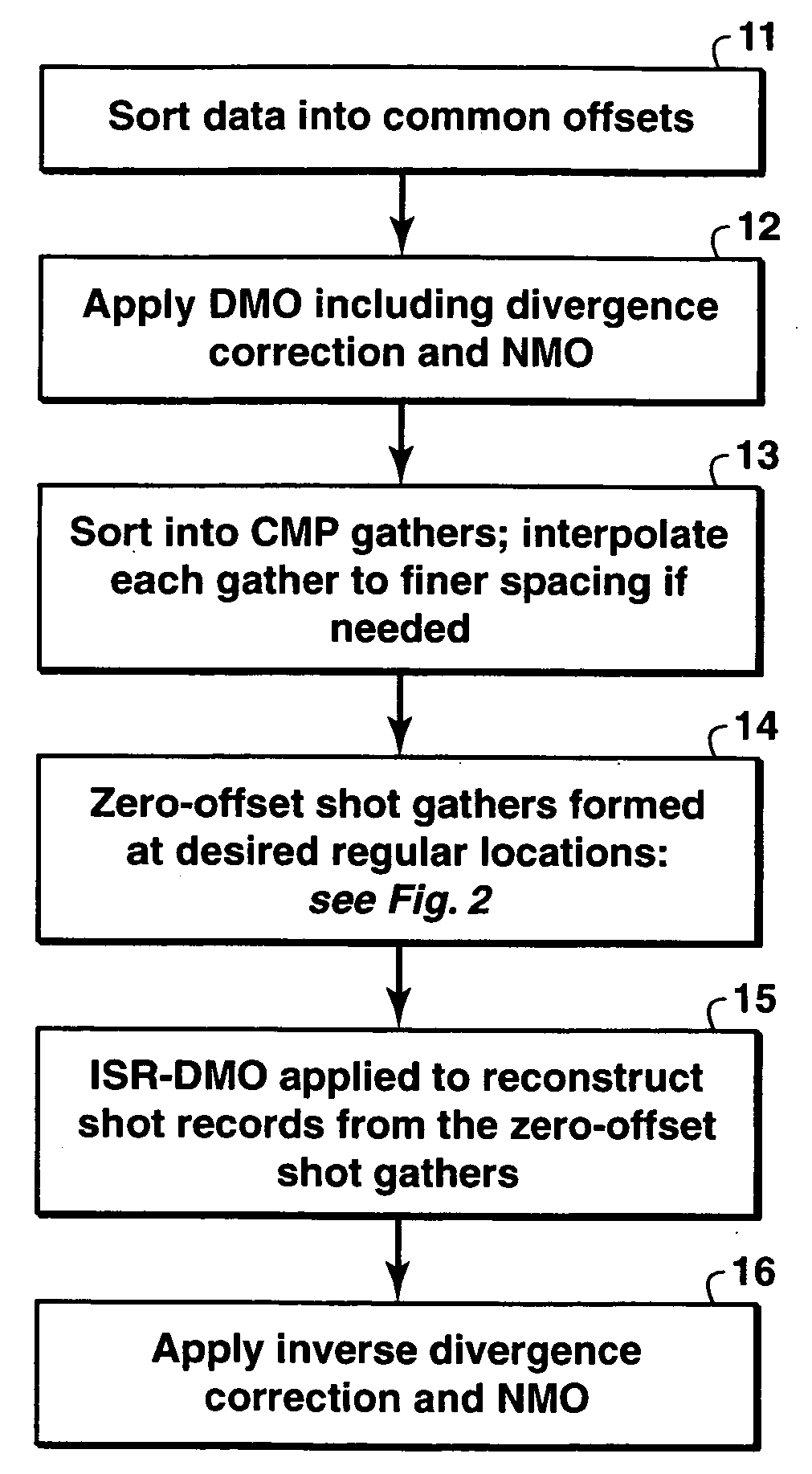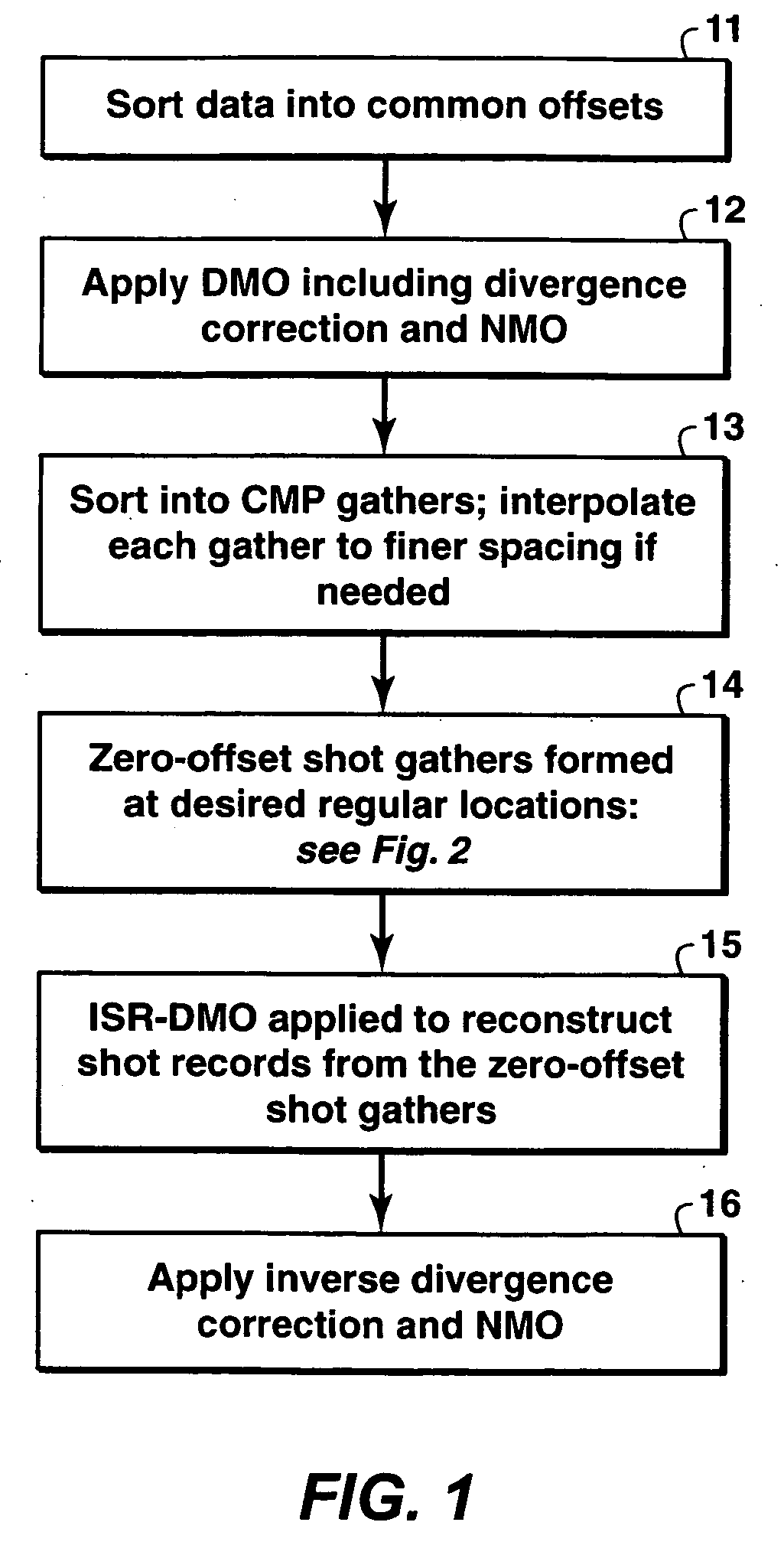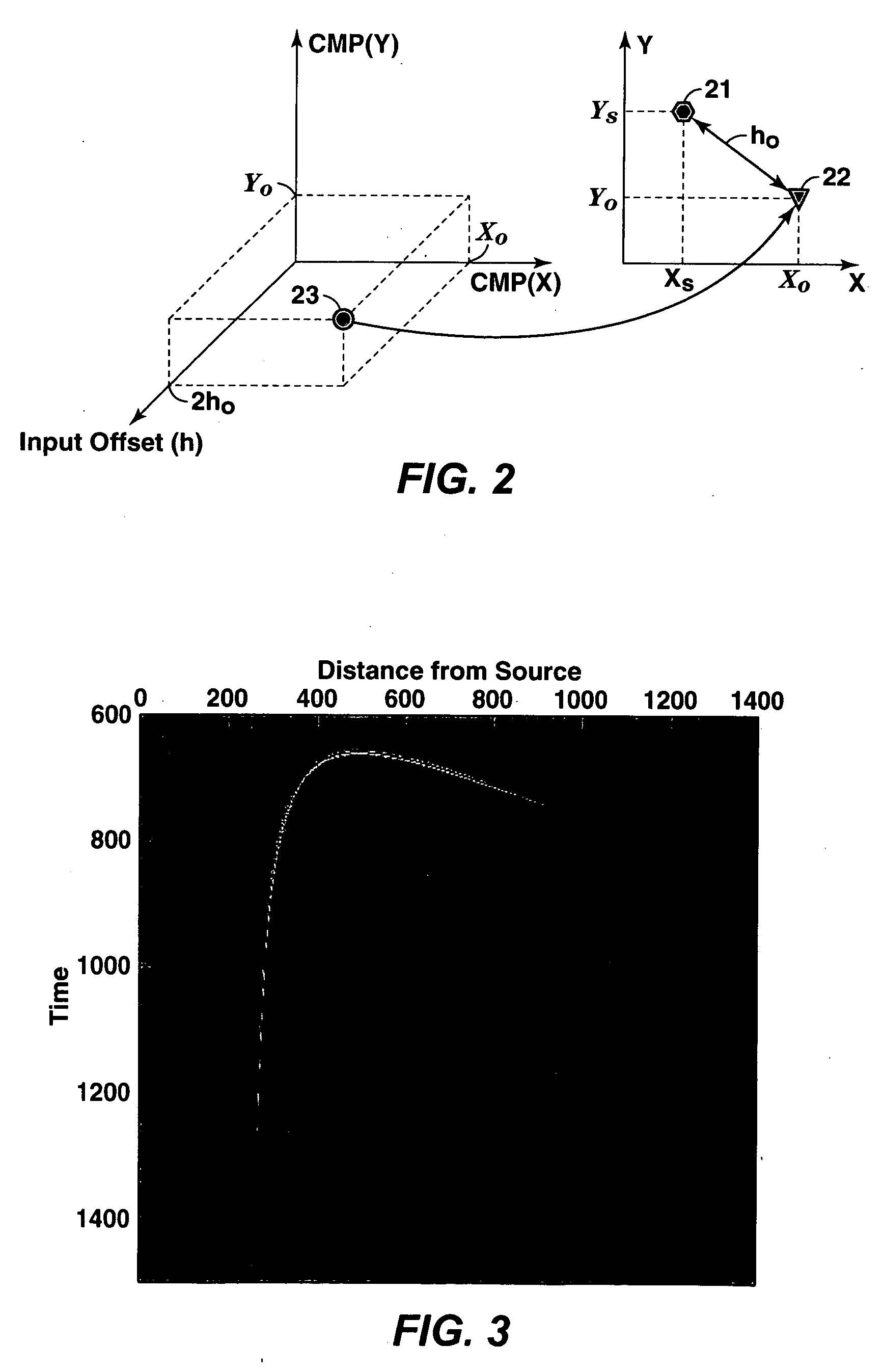Method for data regulariization for shot domain processing
a data and shot domain technology, applied in the field of geophysical prospecting, can solve the problems of difficult to achieve in common industry practice, inability to meet the needs of seismic data processing, and inability to provide data suitable or optimal for either of the above processing algorithms
- Summary
- Abstract
- Description
- Claims
- Application Information
AI Technical Summary
Benefits of technology
Problems solved by technology
Method used
Image
Examples
examples
1. Synthetic Data Example
[0060] The goal of this synthetic test was to reconstruct a shot in a position where it had not been originally “acquired” (modeled, since this is a synthetic example) and to compare it to a shot at the same position, modeled separately. Good agreement between the two results would validate the reconstruction method. In this example, a typical marine survey with 10 streamers and 2 sources was modeled. FIG. 7 illustrates the geologic model, which consists of the free surface 71, water bottom with cross-line dip 72, and one subsurface reflector 73 with both in-line and cross-line dips. Typical values were assigned for P-wave and S-wave velocities and for density in the different regions of the model. The reconstruction process described above was applied to synthesize a shot positioned at 75 between two of the original sail lines(not shown), and the results are shown in FIG. 8. A shot at exactly the same location with exactly the same receiver coverage 74 was...
PUM
 Login to View More
Login to View More Abstract
Description
Claims
Application Information
 Login to View More
Login to View More - R&D
- Intellectual Property
- Life Sciences
- Materials
- Tech Scout
- Unparalleled Data Quality
- Higher Quality Content
- 60% Fewer Hallucinations
Browse by: Latest US Patents, China's latest patents, Technical Efficacy Thesaurus, Application Domain, Technology Topic, Popular Technical Reports.
© 2025 PatSnap. All rights reserved.Legal|Privacy policy|Modern Slavery Act Transparency Statement|Sitemap|About US| Contact US: help@patsnap.com



